ChatGPT's astonishing development has left many in awe. Nearly two years after my initial request for a generative AI chatbot to assist in game development, I retested ChatGPT 4o with the exact same prompt, and the results were nothing short of shock.
**Initial Experience with GPT for Game Development: A Time-Consuming Endeavor**
Ever since OpenAI's generative AI platform emerged, there has been a desire to utilize it for tasks we'd rather not do or even tasks beyond our capabilities. As a writer by trade, I wouldn't ask ChatGPT to craft prose; and while my artistic design skills are passable, I use generative images for personal entertainment. However, programming is not within my skill set, despite previous exposure to HTML, JavaScript, and even BASIC, which I've now largely forgotten.
In early 2023, I asked ChatGPT to help me create a game called Tic-Tac-Go, a more advanced version of tic-tac-toe with a 12×12 grid, where the goal is to align six "X" or "O" markers in a row. I envisioned a variant of tic-tac-toe with a 12×12 grid, using "X" and "O" as pieces. Players could place their markers in any grid to block the opponent's current or subsequent moves, aiming to align six in a row before their opponent, either horizontally, vertically, or diagonally. The game was to be coded in simple HTML and JavaScript, with one player using "X" and the other "O".
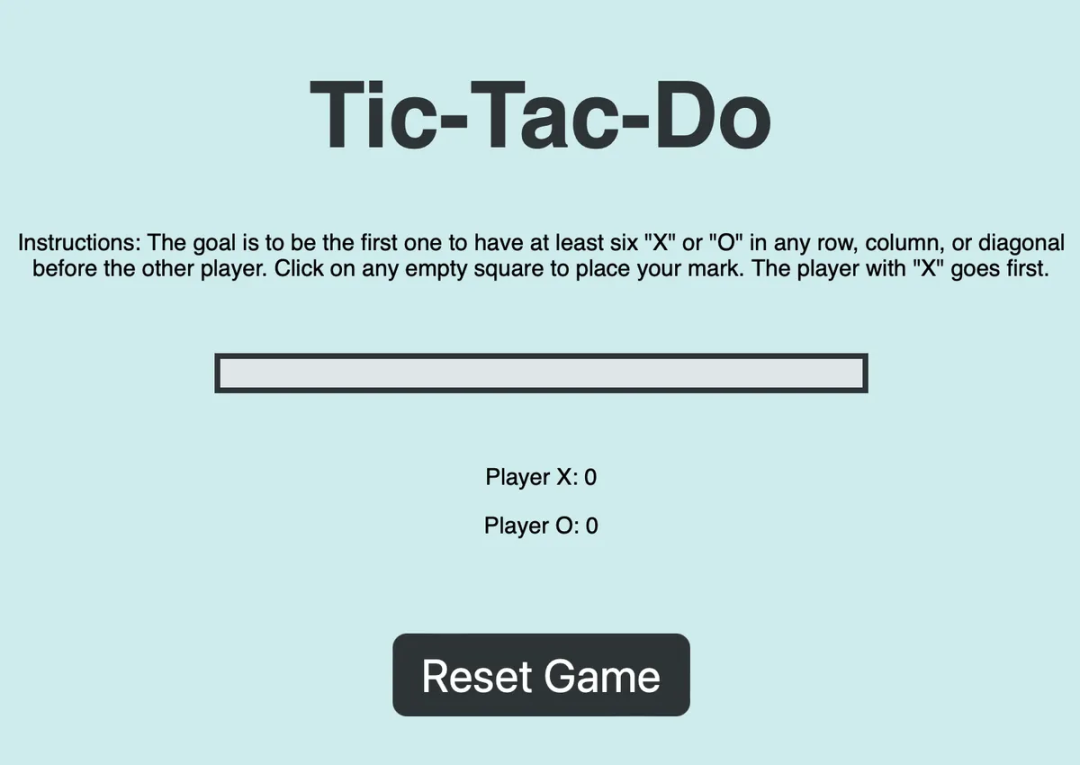
Despite the project's moderate difficulty, it involved nested tables and browser interactions, which were beyond my capabilities. The first attempt was successful in that ChatGPT provided CSS, JavaScript, and HTML files with extensive comments. However, due to the built-in character limit (4096), most of the content was incomplete, and I had to repeatedly ask for the rest of the code, which led to repetition of previously provided sections.
There was undoubtedly a mistake on my part, but I also realized that ChatGPT 1.0 was not enough to compensate for my lack of development skills. After hours of testing, we had to give up on building the game.
**Revisiting Game Development with GPT 4o: A Quantum Leap to Version 2.0**
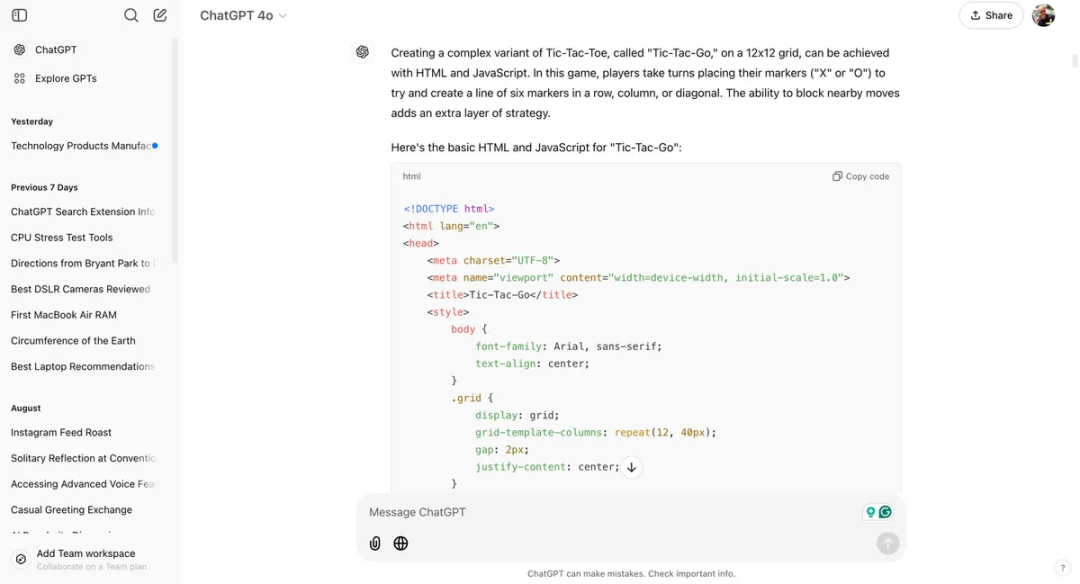
Over the past 20 months, ChatGPT's capabilities have seen a massive leap. I recently started using ChatGPT for searches and found it to be more effective at providing high-quality answers than Google. ChatGPT 4o has overcome almost all the limitations I encountered in the first version. I became curious about the boundaries of its capabilities.
Colleagues in our Slack channel mentioned new AI distributed computing platforms, such as Oasis AI, which could help programmers develop games quickly. I was skeptical but recalled my failed attempt at game development with ChatGPT. After sharing my experience, a colleague wondered if these new AI tools could make the task easier.
A great idea! Could ChatGPT 4o rise where the initial ChatGPT stumbled and create a new legend?
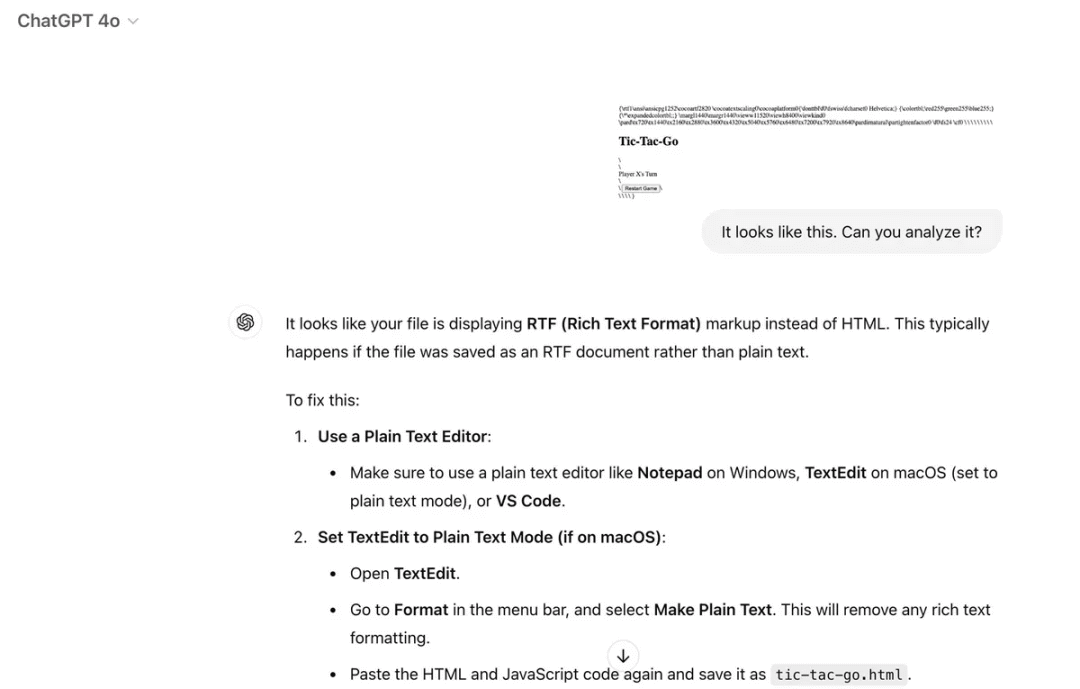
**From Concept to Game Execution: A Successful One-Time Attempt**
To be fair, I didn't adjust the prompts and simply pasted the original text into ChatGPT 4o. I quickly realized that the current 4o is not in the same league as the 1.0 version. If ChatGPT 1 was at most an elementary level of intelligence, then ChatGPT 4o is at least a college student.
ChatGPT 4o first organized my game concept into a more concise form: creating a more complex variant of tic-tac-toe on a 12×12 grid, named Tic-Tac-Go, implementable with HTML and JavaScript. In this game, two players take turns placing markers (X or O), trying to align six in a row, column, or diagonal. It can block the opponent's strategy by placing markers.
It then quickly generated HTML and JavaScript code, which was quite complete. I received everything from the opening "html" to the closing "/html". After the code, ChatGPT explained the working principle and related game functions in four points. In addition to HTML and JavaScript, there was a "copy code" button.
I copied the code and asked ChatGPT how to test it in a web browser (intentionally asking). It suggested opening a text editor like TextEdit, pasting the code, and saving it with an ".html" extension. After doing so, I tried loading the file in Chrome and Safari, only to find that it wasn't a game but a bunch of code with a "restart game" button.
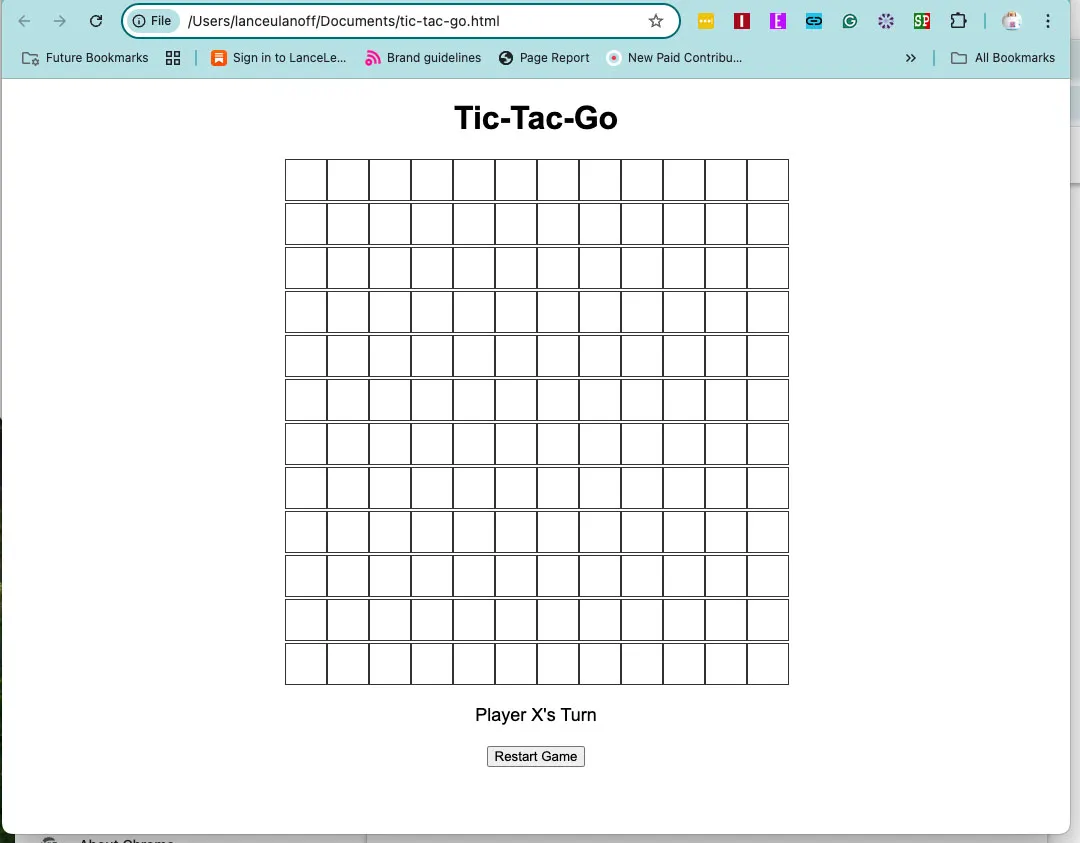
I fed back the situation to ChatGPT and asked if I needed to save JavaScript as a separate file. It told me it wasn't necessary and reminded me to check if the file extension was correct and if RichText was disabled. It also provided other suggestions, such as using developer tools to check if JavaScript was working properly.
Then I had a new idea. I sent a screenshot of the error webpage directly to ChatGPT and asked if it could analyze the image. This kind of multimodal functionality was unimaginable in the initial ChatGPT, but now it's no problem at all.
ChatGPT replied, "It seems your file is displaying RTF (Rich Text Format) tags instead of HTML. This usually happens if the file is saved as an RTF document instead of plain text." It then explained the principle and specific fixes.
I pasted the code again, set TextEdit to PlainText, and saved it as an HTML file. Finally, I opened the file with Chrome.
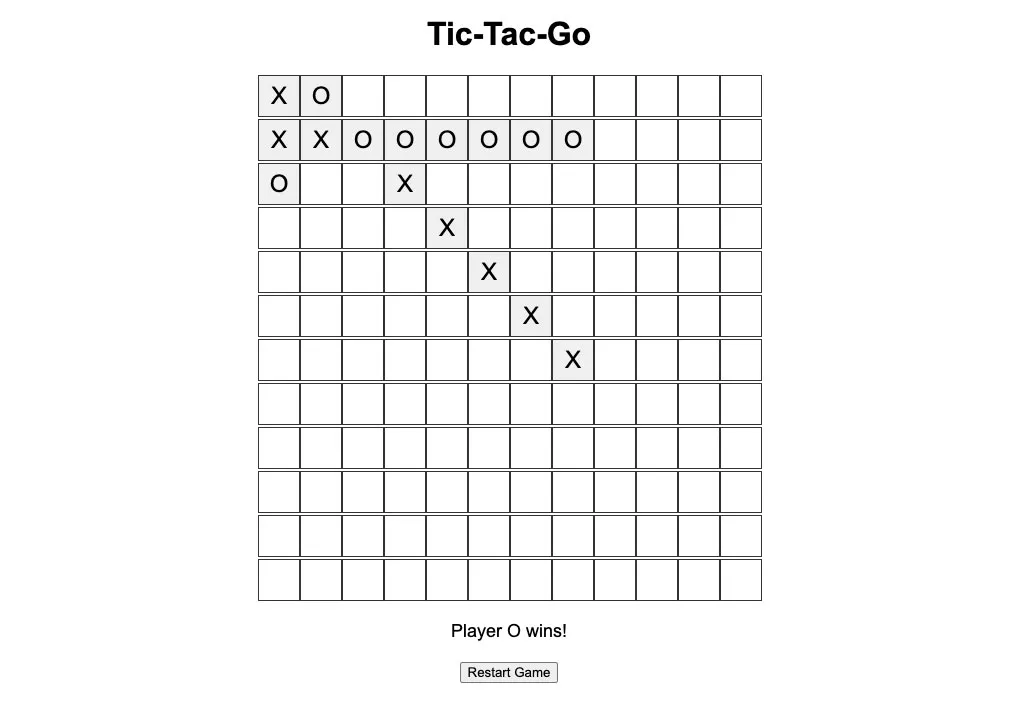
The program ran smoothly, and the entire game was exactly as I imagined. There were 144 squares on the board, along with a two-player system for placing "X" and "O" markers.
**One-Click Update to Multiplayer Online Gaming**
Next, I realized that beginners would not know what to do when facing the board, so I asked ChatGPT if it could add rules below the game screen. ChatGPT immediately output new code containing the game rules.
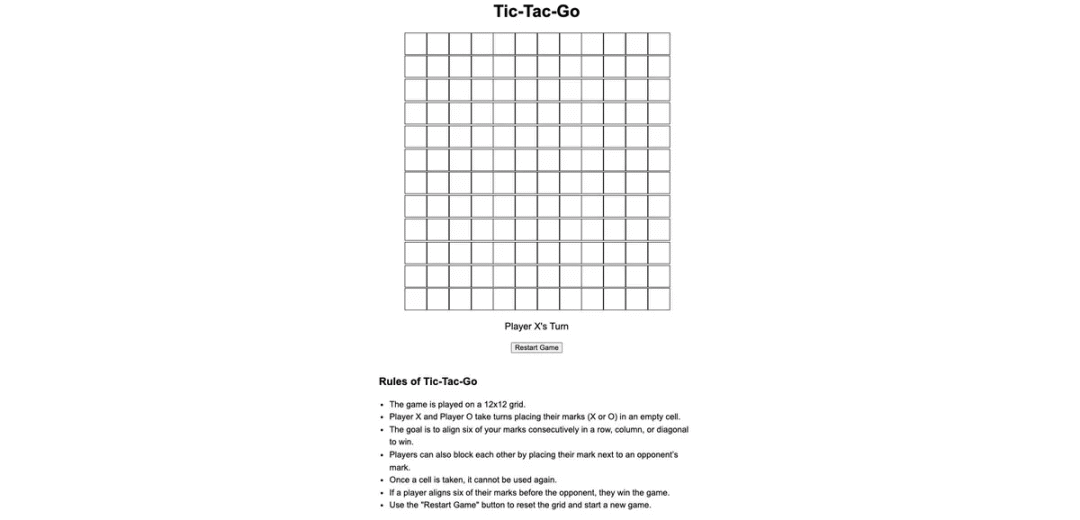
In the initial ChatGPT, whenever I asked it to re-output the code, something would disappear in the process. But not this time. The 20-month iteration has far surpassed its previous version in terms of efficiency, clarity, and memory.
Then another bold idea came to mind, but it was also a very logical game update direction: online gaming functionality. The current design only allows two people to sit side by side in front of the computer to compete, but I wanted to implement online competition functionality.
"To turn it into a multiplayer online game, you need to set up a server to manage game status and player interactions. Here is a summary of the necessary steps and some code examples to help you get started quickly…"
ChatGPT provided detailed instructions and all the code needed to set up a server. It involved things like Node.js and WebSockets, which I couldn't understand at all. But ChatGPT clearly knew what it was doing and really had the ability to complete the entire task independently.
That is to say, I just need to come up with an idea, and ChatGPT 4o can handle the rest. Well done, AI. This technology has made great strides in a short period. I firmly believe that AI-assisted programming has a bright future, but I'm not sure if the future of human programmers is still bright.